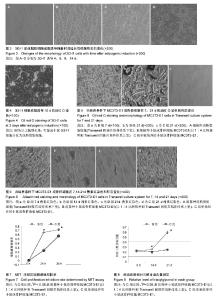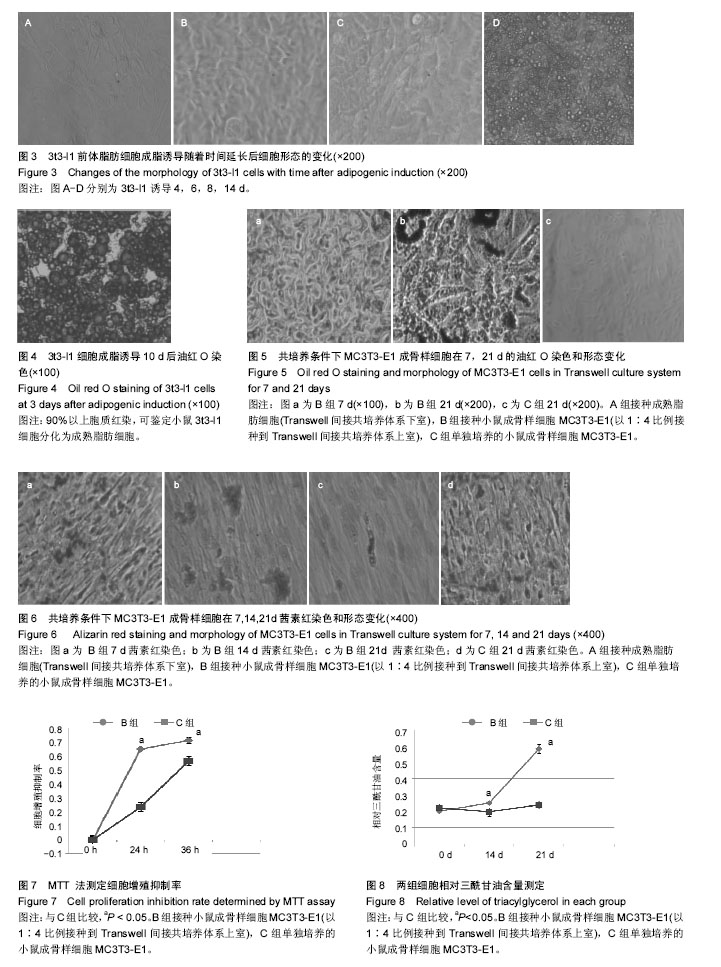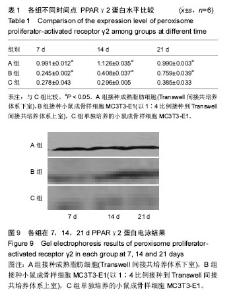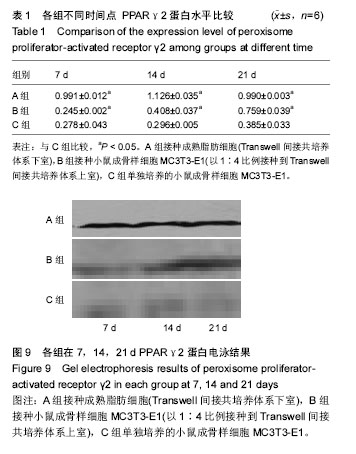| [1] 杨茂伟,梁丹,郭宝磊,等.不同浓度锌对成骨细胞MC3T3-E1骨保护素基因表和细胞增殖的影响[J]. 中国骨质疏松杂志, 2011, 17(12):1037-1040.[2] Fotouk KM, Hoseini SR, Meftah N, et al. Relationship between Helicobacter pylori infection (HP) and bone mineral density (BMD) in elderly people. Caspian J Intern Med. 2015; 6(2):62-66.[3] 王吉博,彭浩,王凤宇,等. GJIC增强剂PGE2对兔脂肪细胞向成骨细胞横向分化的影响[J]. 中国骨质疏松杂志,2014,20(9): 1079-1083.[4] 王兆杰,安荣泽,张弛, 等.兔成骨细胞与脂肪细胞横向分化的研究[J]. 中华实验外科杂志,2012,29(70):1262-1264.[5] Lee HM, Joo BS, Lee CH, et al. Effect of Glucagon-like Peptide-1 on the Differentiation of Adipose-derived Stem Cells into Osteoblasts and Adipocytes. J Menopausal Med. 2015;21(2): 93-103.[6] 谢小伟,康鹏德,裴福兴,等.特异性阻抑DKK-1对小鼠脂肪细胞向成骨细胞转分化的影响研究[J].中国矫形外科杂志, 2013,21(7): 695-700.[7] Park SR, Oreffo RO, Triffitt JT, et al. Interconversion potential of cloned human marrow adipocytes in vitro. Bone. 1999; 24(11) : 549-553.[8] 王兆杰,安荣泽,张弛,等.缝隙连接通讯对骨髓中成骨细胞与脂肪细胞横向分化调控的研究进展[J].中华实验外科杂志, 2011, 28(11):2024-2026.[9] 詹秀琴,姜泽群. 干细胞共培养技术在医学研究中的应用[J]. 中国细胞生物学学报,2014,36(8):1178-1185.[10] 陆海涛,袁峰,张峻玮,等.低氧环境下共培养的骨膜细胞和髓核细胞骨向分化能力的研究,[J] 中国矫形外科杂志, 2016,24(9): 839-844.[11] Zheng P, Ju L, Jiang B, et al. Chondrogenic differentiation of human umbilical cord blood?derived mesenchymal stem cells by co?culture with rabbit chondrocytes. Mol Med Rep. 2013; 8(4):1169-1182.[12] Lovati AB, Corradetti B, Cremonesi F, et al. Tenogenic differentiation of equine mesenchymal progenitor cells under indirect co-culture. Int J Artif Organs. 2012; 11:996-1005.[13] 陈晓,叶耀珍,邹晓晖,等.人胚胎干细胞向肌腱细胞分化方法的专家共识[J]. 浙江大学学报(医学版), 2016,45(2) :105-111.[14] 杨民,郑伟伟,林程.骨髓间质干细胞和脂肪间质干细胞混合培养后的成骨能力[J].中华骨科杂志,2016,36(23): 1524-1532.[15] 秦燕勤,陈玉龙,李建生.细胞共培养方法的研究进展[J]. 中华危重病急救医学,2016,28(8):765-768.[16] Kühn MC, Willenberg HS, Schott M, et al. Adipocyte-secreted factors increase osteoblast proliferation and the OPG/RANKL ratio to influence osteoclast formation. Cell Tissue Res. 2015; 334(248):243-254.[17] Hatakeyama N,Kojima T,Iba K, et al. IGFregulates tight-junction protein claudin-1 during differentiation of osteoblast like MC3T3-E1 cells via a MAP-kinase pathway. Cell Tissue Res. 2008;334(21):243-254.[18] 崔云英,田京.骨髓脂肪细胞与成骨细胞分化的信号转导调控机制,[J] 中国骨质疏松杂志,2013,19(07): 755-760.[19] Kim SW,Her SJ,Kim SY,et al. Ectopic overexpression of adipogenic transcription factors induces transdifferentiation of MC3T3-E1osteoblast. Biochem Commun. 2005;126(31):327.[20] 刘刚,罗高斌,梁晓南,等.Wnt经典信号通路在兔激素性股骨头坏死中的作用[J]. 中华实验外科杂志,2016,33(11):2472-2476.[21] Leeka-Czemik B, Moerman EJ, Grant DF, et al. Divergent effects of selective proliferator-activate dreceptor-gamma2 ligand sona dipocyteversus osteoblastdifferentiation. Endocrinology. 2012;143(6):2376-2384.[22] 白亮,张亚莉,谢晨,等.高表达过氧化物酶体增殖子激活受体γ诱导小鼠原代肝细胞发生脂肪变性[J].浙江大学学报(医学版), 2016,45(1):68-74.[23] Kim J, Ko J. A novel PPAR2 modulator sLZIP controls the balance between adipogenesis and osteogenesis during mesenchymal stem cell differentiation. Cell Death Differ. 2014;21(10):1642-1655. [24] Sadie-Van Gijsen H, Crowther NJ, Hough FS, et al. Ferris The interrelationship between bone and fat: from cellular see-saw to endocrine reciprocity. Cell Mol Life Sci. 2013;70: 2331-2349.[25] Gnecchi M,Zhang Z,Ni A, et al.Paracrine mechanisms in adult stem cell signaling and therapy. Circ Res. 2008;103(11): 1204-1219.[26] 丁吉吉,姜尔烈,韩明哲.骨髓脂肪细胞的生物学特性及其与疾病的关系[J]. 国际输血及血液学杂志, 2015,38(2):170-173.[27] Fredrickson BE,Baker D,Mcholock WJ, et al.The natural history of spondylolysis and spondylooisthis. J Bone Joint Surg( Am). 2015;57(26);1009-1011.[28] 熊成海,刘保龙,闫华,等.升高脑脊液瘦素水平预防兔骨质疏松的实验研究[J]. 中华骨科杂志,2016,36(18): 1191-1201.[29] 王文怡,高艳虹,王燕,等.老年男性骨密度与血清脂联素水平的相关性研究[J]. 中国医师杂志 ,2016,18(8): 1190-1193.[30] Abuna RP, De Oliveira FS, Santos Tde S, et al. Participation of TNF-αin Inhibitory Effects of Adipocytes on Osteoblast Differentiation. Cell Phys. 2016;231(1):204-214. |



